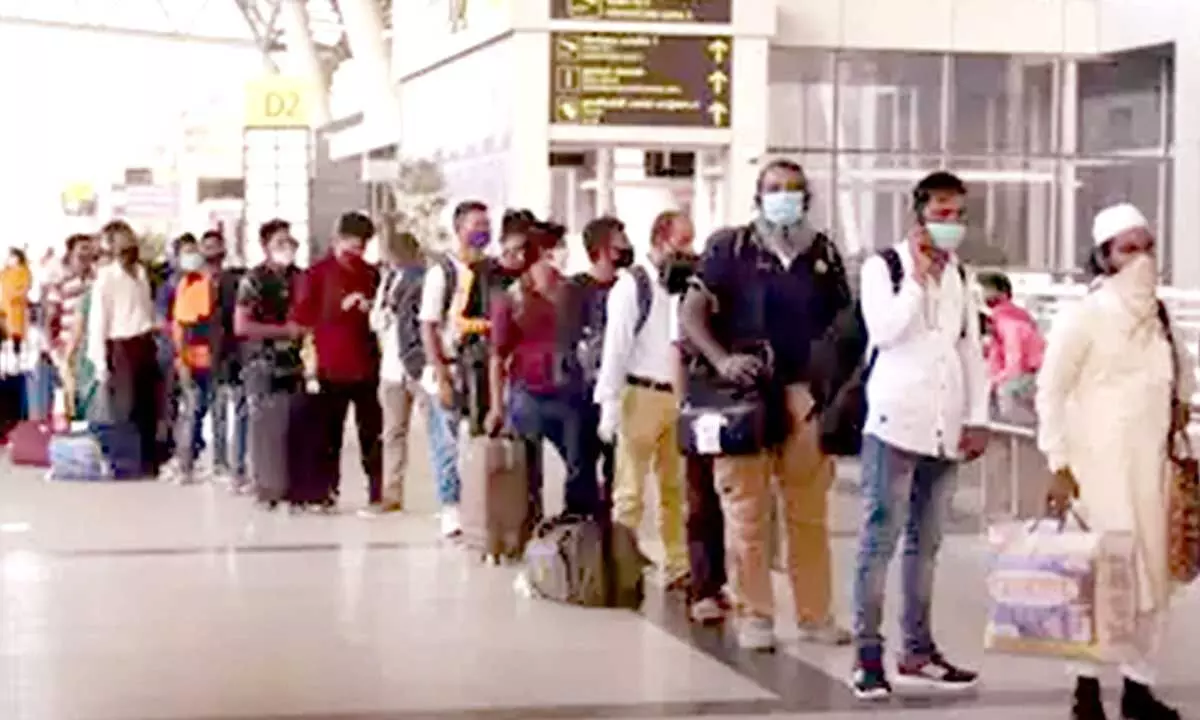Domestic air passenger traffic on good growth trajectory
Elevated ATF prices aggravated by geo-political issues will remain a near-term challenge for the industry and will continue to weigh on the profitability of Indian carriers
image for illustrative purpose

For June 2022, the average daily departures were at 2,771, notably higher than the average daily departures of 1,056 in June 2021, and marginally lower compared to 2,784 in May 2022. The average number of passengers per flight during June 2022 was 127, lower than an average of 140 passengers per flight in May 2022 and an average of 139 passengers per flight in June 2019
The International Air Transport Association (IATA) expects overall traveller numbers to reach 4 billion in 2024 (counting multi-sector connecting trips as one passenger), exceeding pre-Covid-19 levels (103 per cent of the 2019 total).
Expectations for the shape of the near-term recovery have shifted slightly, reflecting the evolution of government-imposed travel restrictions in some markets. The overall picture presented in the latest update to IATA's long-term forecast, however, is unchanged from what was expected in November, prior to the Omicron variant.
"The trajectory for the recovery in passenger numbers from Covid-19 was not changed by the Omicron variant. People want to travel. And when travel restrictions are lifted, they return to the skies. There is still a long way to go to reach a normal state of affairs, but the forecast for the evolution in passenger numbers gives good reason to be optimistic," said Willie Walsh, IATA's Director General.
The slow removal of international travel restrictions and the likelihood of renewed domestic restrictions during Covid outbreaks, mean that traffic to/from/within Asia Pacific will only reach 68 per cent of 2019 levels in 2022, the weakest outcome of the main regions. 2019 levels should be recovered in 2025 (109 per cent) due to a slow recovery on international traffic in the region.
"The biggest and most immediate drivers of passenger numbers are the restrictions that governments place on travel. Fortunately, more governments have understood that travel restrictions have little to no long-term impact on the spread of a virus. And the economic and social hardship caused for very limited benefit is simply no longer acceptable in a growing number of markets. As a result, the progressive removal of restrictions is giving a much-needed boost to the prospects for travel," adds Walsh.
With return to normalcy in the Indian business environment, the domestic passenger traffic grew by 2.39 times Y-o-Y to 10.5 million in June 2022 (3.1 million in June 2021) and was only 12 per cent lower compared to 12.0 million in June 2019 (pre-Covid level). On a sequential basis, however, the domestic air passenger traffic in June 2022 was 13 per cent lower compared to 12.1 million in May 2022, primarily due to the seasonality impact related to the re-opening of schools. The airlines' capacity deployment for June 2022 was 1.6 times higher than in June 2021 (83,124 departures in June 2022 against 31,693 departures in June 2021). On a sequential basis, the number of departures in June 2022 was lower by around 4 per cent compared to May 2022.
As per a recent report released by ICRA and commenting further, Suprio Banerjee, Vice President & Sector Head, ICRA said, For June 2022, the average daily departures were at 2,771, notably higher than the average daily departures of 1,056 in June 2021, and marginally lower compared to 2,784 in May 2022. The average number of passengers per flight during June 2022 was 127, lower than an average of 140 passengers per flight in May 2022 and an average of 139 passengers per flight in June 2019. The recovery in passenger traffic is expected to be relatively faster in FY23 with the return to normalcy situation; however, an overhang of any further Covid wave looms on the sector and will be monitorable. Elevated ATF prices aggravated by geo-political issues will remain a near-term challenge for the industry and will continue to weigh on the profitability of Indian carriers. The recent depreciation of rupee has further added to the industry woes, given around 35-50 per cent of the airlines' operating expenses are denominated in USD Also, led by rising ATF prices, the yields for the airlines have started inching up and are estimated to have moved up by around 20 per cent over the last year.
With the resumption of scheduled international operations since March 27, 2022, and reversion to bilaterally-agreed capacity entitlements, the international passenger traffic for Indian carriers is on a growth trajectory and surged to 2.1 million in June 2022, which has notably surpassed the international passenger traffic of 1.8 million witnessed in June 2019 (pre-Covid level) by 18 per cent.
An area of concern remains, that of ATF prices which have surged by 120 per cent on a Y-o-Y basis in mid-June 2022, given the elevated crude oil prices, due to geo-political issues arising from the Russian invasion of Ukraine. The rising ATF prices will pose a serious threat to the industry earnings in FY2023. On an aggregate basis, a return to normalcy will lead to recovery in passenger load factors, which in turn will aid revenues; however, elevated ATF prices will continue to weigh on the earnings of Indian carriers in FY23.

